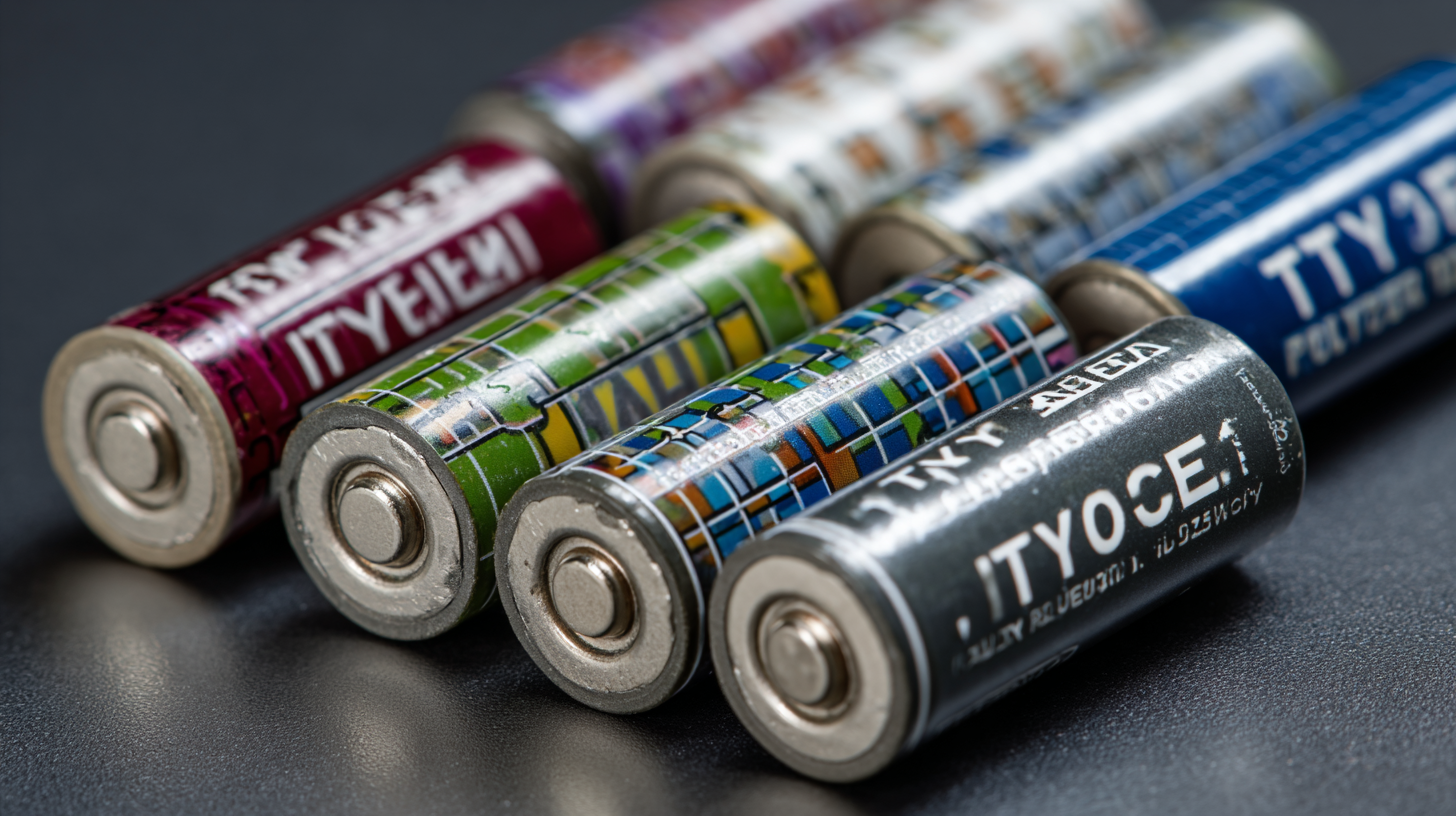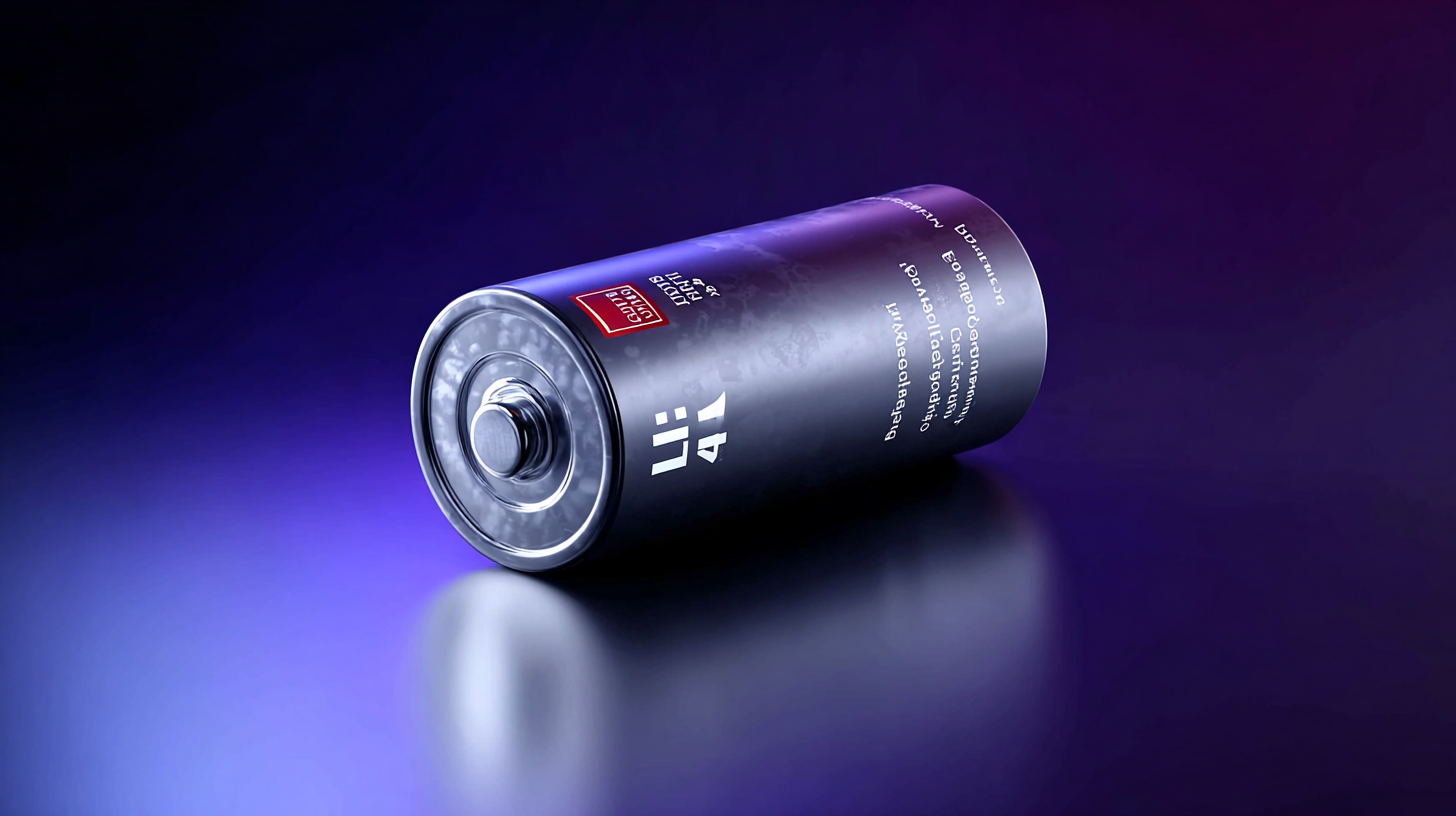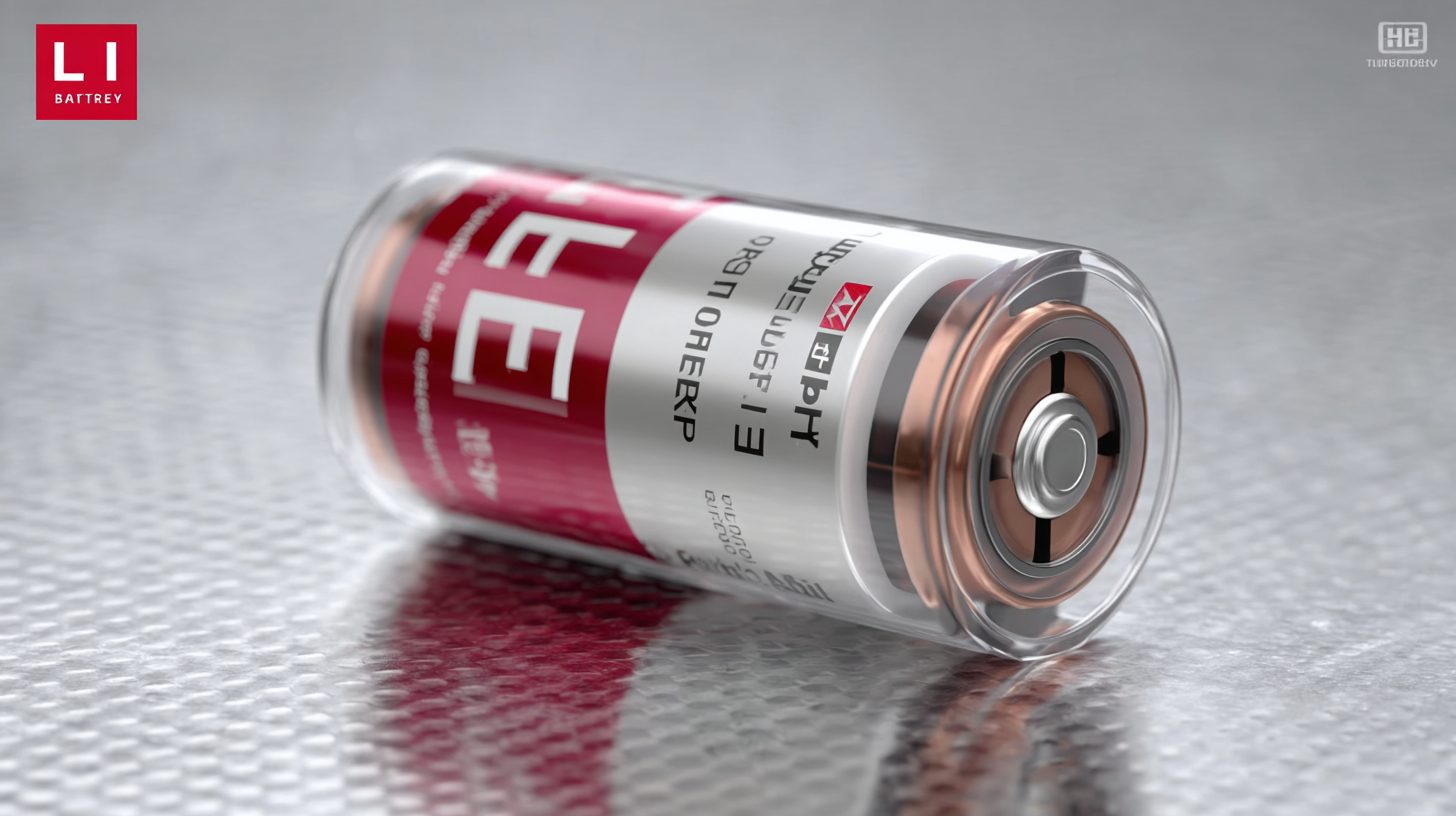
The Future of Advanced Applications for Best Li Polymer Cylindrical Batteries
As the demand for high-performance energy storage solutions continues to rise, the focus on Li Polymer Cylindrical Batteries has become more pronounced. According to a recent market report by Fortune Business Insights, the global lithium-ion battery market, which includes Li Polymer technology, is projected to reach USD 129.3 billion by 2027, growing at a CAGR of 20.4% from 2020 to 2027. This surge in growth underscores the importance of selecting high-quality manufacturers capable of meeting the evolving needs of advanced applications across industries such as automotive, electronics, and renewable energy. As technology advances, ensuring that the right Li Polymer Cylindrical Battery is sourced from reputable manufacturers will be crucial for optimizing performance, safety, and sustainability in future energy innovations.

Emerging Trends in Li Polymer Cylindrical Battery Applications
The landscape of lithium polymer cylindrical batteries is evolving rapidly, unveiling a myriad of emerging trends that are reshaping their applications across various sectors. One prominent trend is the integration of advanced battery management systems (BMS) that enhance battery performance and lifespan. These systems leverage AI and machine learning to optimize charging cycles, monitor health status, and ensure safety, making lithium polymer batteries an attractive choice for high-performance applications in electric vehicles and consumer electronics.
Additionally, the demand for lightweight and flexible power solutions has catalyzed innovation in design and materials. Manufacturers are exploring new polymer compounds that not only improve energy density but also reduce overall weight, catering to industries like aerospace and portable devices.
Furthermore, the trend towards renewable energy solutions is driving the adoption of lithium polymer batteries in solar and wind energy storage systems, as their efficient charging capabilities allow for rapid energy accumulation from fluctuating sources. As these trends continue to unfold, the future of lithium polymer cylindrical batteries looks promising, enabling smarter, more sustainable energy solutions.

Key Advantages of Li Polymer Technology Over Traditional Batteries
The advent of Li Polymer technology has transformed the landscape of battery applications, particularly when it comes to cylindrical batteries. One of the most significant advantages of Li Polymer over traditional batteries is its lightweight construction, allowing for increased energy density. This means that devices can be built lighter and slimmer while still delivering impressive power levels. For applications ranging from consumer electronics to electric vehicles, the ability to reduce weight without sacrificing performance is invaluable.
In addition to weight, Li Polymer batteries exhibit superior flexibility in design. Their construction allows for various shapes and sizes, enabling manufacturers to create bespoke battery solutions that fit seamlessly into diverse product designs. This flexibility can lead to more innovative applications in areas such as wearables and smart technologies.
Tips: When selecting batteries for your device, consider compatibility with Li Polymer's unique shapes and sizes. Also, assess your energy needs relative to the weight savings offered, as this can greatly enhance overall device performance. Keep an eye on emerging technologies, as advancements in Li Polymer will continue to unfold, offering even more significant benefits in the future.
Step-by-Step Guide to Maximizing Battery Efficiency in Advanced Applications
Maximizing the efficiency of lithium polymer cylindrical batteries is crucial for advanced applications across various industries, including electric vehicles and renewable energy storage. According to a report by the International Energy Agency (IEA), the global demand for lithium-based batteries is projected to reach over 2,000 GWh by 2030. To meet this surging demand, optimizing battery performance is essential. A step-by-step approach can help achieve this, beginning with proper battery selection based on specific application requirements, such as energy density and thermal stability.
Next, implementing effective charging protocols can significantly enhance battery lifespan and efficiency. A study published in the Journal of Power Sources indicates that employing fast charging methods while maintaining optimal temperature ranges can improve energy retention by up to 15%. Additionally, regular monitoring of battery health through advanced diagnostics can identify potential issues before they lead to performance degradation. By focusing on these strategies, manufacturers and users can ensure that lithium polymer cylindrical batteries not only meet but exceed the efficiency demands of future advanced applications.
Innovative Use Cases for Li Polymer Cylindrical Batteries in Various Industries
The rapid advancement of technology has propelled lithium polymer cylindrical batteries into the spotlight, showcasing their versatility across different industries. One of the most promising applications is in the automotive sector, where these batteries are increasingly used in electric vehicles (EVs). Their lightweight design and high energy density enable manufacturers to develop more efficient and longer-lasting EVs, addressing the critical need for sustainable transportation solutions.
Another significant use case is in consumer electronics, where Li polymer cylindrical batteries power a wide range of devices, from smartphones to laptops. Their ability to maintain performance even under varying temperatures and conditions makes them ideal for high-demand applications. Moreover, innovations in battery management systems are enhancing safety and longevity, further solidifying the role of these batteries in everyday technology.
In the realm of renewable energy, Li polymer cylindrical batteries are becoming essential in energy storage systems. They offer a reliable solution for storing energy generated from solar or wind resources, allowing for a more sustainable grid. As industries continue to embrace these energy-efficient options, the potential for lithium polymer batteries to drive innovation and sustainability is vast, paving the way for a greener future.
The Future of Advanced Applications for Best Li Polymer Cylindrical Batteries - Innovative Use Cases for Li Polymer Cylindrical Batteries in Various Industries
| Industry | Use Case | Advantages | Future Potential |
|---|---|---|---|
| Consumer Electronics | Smartphones and Tablets | Higher energy density, lighter weight | Enhancing portability and efficiency |
| Automotive | Electric Vehicles (EVs) | Fast charging times, long cycle life | Increasing EV adoption rates |
| Renewable Energy | Solar Energy Storage | Efficient energy storage and management | Scaling renewable energy integration |
| Healthcare | Medical Devices | Compact size, reliable power | Innovating life-saving technologies |
| Aerospace | Drones and UAVs | High energy output, reduced weight | Expanding surveillance and delivery services |
Future Challenges and Solutions in the Development of Advanced Battery Applications
The future of advanced battery applications, particularly in the realm of lithium polymer cylindrical batteries, poses both significant challenges and exciting opportunities. The global advanced energy storage systems market, currently valued at approximately $209.63 billion, is projected to reach around $393.21 billion by 2033, indicating a robust compound annual growth rate (CAGR) of 8.18%. This growth trajectory highlights the increasing demand for efficient, high-performance energy storage solutions across various sectors.
One of the most promising advancements in this field is in the development of hydrogen fuel cell commercial vehicles. Recent discussions led by industry leaders emphasize that the next five years will be pivotal for hydrogen energy, particularly in transportation. The trend towards adopting hydrogen fuel cells signifies a shift in the automotive industry, with stakeholders keen on tapping into this billion-dollar market. As we navigate through these advancements, addressing challenges such as cost-effectiveness, infrastructure development, and technological integration will be crucial for driving innovation and expanding the reach of these advanced battery applications. The interplay between hydrogen fuel cells and advanced battery technologies is set to shape the future of sustainable energy solutions significantly.

